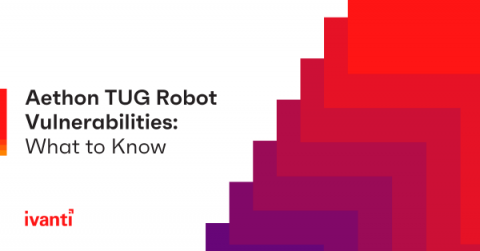5 New Aethon TUG Robot Vulnerabilities Expose Healthcare Facilities to IoMT Hackers
Healthcare providers must be extremely vigilant in their cybersecurity defense posture. After all, vulnerabilities in the Internet of Medical Things (IoMT) cost hospitals nearly $21 billion in 2021. New security discoveries by Ivanti partner Cynerio recently made that statistic personal for many providers. While working with an existing healthcare customer, Cynerio found five zero-day vulnerabilities in Aethon TUG autonomous robots – an IoMT device found in many healthcare facilities.











